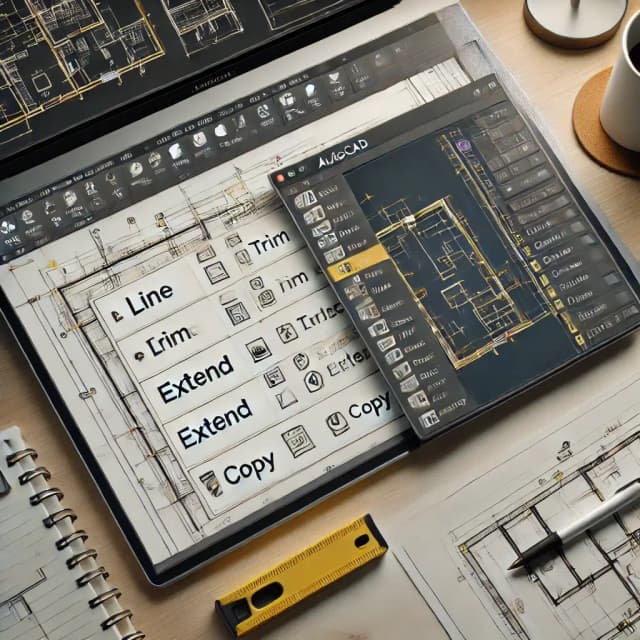cad
engineering tools
AutoCAD Performance Optimization: Speed Up Your Workflow

In This Post
Introduction
Are you tired of AutoCAD slowing you down? Don't let lagging software stand between you and your design goals.
If AutoCAD's sluggish performance is frustrating your workflow, know that you're not alone. Many users face the same challenge.
In this comprehensive guide, we'll explore the reasons why AutoCAD can slow down, delve into the system requirements, and most importantly, provide practical tips to help you speed up your AutoCAD experience.
What You'll Learn
By following the tips and techniques outlined in this article, you'll learn how to identify and устранить performance bottlenecks, customize your AutoCAD settings for optimal speed, and implement best practices to maintain a smooth and efficient workflow.
This guide is perfect for AutoCAD users of all levels who want to improve their productivity and minimize software-related frustrations.
Key Topics We'll Cover
-
Understanding AutoCAD System Requirements
Ensure that your computer meets the minimum system requirements to run AutoCAD smoothly.
Meeting the system requirements is essential for optimal performance and stability.
-
Optimizing AutoCAD Settings
Configure AutoCAD's settings to match your hardware capabilities and project needs.
Customized settings can significantly improve performance by allocating resources effectively.
-
Hardware Upgrades and Software Maintenance
Consider upgrading your hardware and maintaining your software to enhance AutoCAD's speed.
Investing in better hardware and keeping your software up-to-date ensures compatibility and performance.
Ensure that your computer meets the minimum system requirements to run AutoCAD smoothly.
Meeting the system requirements is essential for optimal performance and stability.Configure AutoCAD's settings to match your hardware capabilities and project needs.
Customized settings can significantly improve performance by allocating resources effectively.Consider upgrading your hardware and maintaining your software to enhance AutoCAD's speed.
Investing in better hardware and keeping your software up-to-date ensures compatibility and performance.AutoCAD is used by over 9 million professionals worldwide, making it essential for architects, engineers, and designers.
With consistent practice and guidance, you can master the tips and techniques in this guide within a few weeks.
Improving your AutoCAD skills can increase your productivity and competitiveness in the job market.
Getting Started
AutoCAD is a powerful software, but it can also be slow at times. If you're experiencing lag, there are a few things you can do to speed up your workflow. In this article, we'll cover some of the most effective AutoCAD performance optimization techniques.
Hardware Requirements
One of the most important factors that affects AutoCAD performance is your computer's hardware. Make sure your computer meets the minimum system requirements for AutoCAD. This includes having a fast processor, plenty of RAM, and a dedicated graphics card.
- Processor: 3.0 GHz or faster
- RAM: 16 GB or more
- Graphics card: Dedicated graphics card with 4 GB or more of VRAM
Software Settings
There are a number of software settings that can affect AutoCAD performance. Here are a few things you can try:
- Disable hardware acceleration: If your computer has a dedicated graphics card, try disabling hardware acceleration in AutoCAD. This can sometimes improve performance.
- Reduce the number of undo levels: AutoCAD keeps track of a certain number of undo levels, which can slow down the software. Try reducing the number of undo levels to improve performance.
- Purge unused objects: Over time, AutoCAD can accumulate unused objects in your drawings. Purging these objects can help to improve performance.
File Management
The way you manage your AutoCAD files can also affect performance. Here are some tips:
- Use a local file server: If you're working on a large project, try storing your files on a local file server instead of a network drive. This can reduce latency and improve performance.
- Break down large drawings: If you're working on a very large drawing, try breaking it down into smaller, more manageable files. This can help to improve performance.
- Use external references: If you're working with a lot of linked files, try using external references instead. This can help to reduce the size of your AutoCAD files and improve performance.
Drawing Settings
The settings in your AutoCAD drawings can also affect performance. Here are a few things to consider:
- Disable unnecessary layers: If you have a lot of layers in your drawing, try disabling the ones that you're not currently using. This can help to improve performance.
- Reduce the number of objects in your drawing: The more objects you have in your drawing, the slower AutoCAD will be. Try to reduce the number of objects in your drawing by purging unused objects and combining similar objects.
- Use lightweight objects: AutoCAD offers a variety of lightweight objects that can help to improve performance. These objects include polylines, circles, and rectangles.
Additional Tips
Here are a few additional tips that can help to improve AutoCAD performance:
- Restart AutoCAD regularly: Restarting AutoCAD can help to clear out any memory leaks and improve performance.
- Use the AutoCAD Performance Monitor: The AutoCAD Performance Monitor can help you to identify performance bottlenecks in your drawings.
- Use online CAD services: If you're working on a small project, you may be able to use an online CAD service instead of AutoCAD. This can be a more cost-effective and efficient option.
Specialized Case Studies
In addition to the general tips above, there are also a number of specialized case studies that can help you to improve AutoCAD performance for specific tasks. For example, if you're working with large architectural models, you can try using the AutoCAD Architecture Performance Optimizer. If you're working with 3D models, you can try using the AutoCAD 3D Performance Optimizer.
Conclusion
AutoCAD performance hiccups can stem from various factors, including system inadequacy, excessive drawing size, and suboptimal settings. Understanding the root causes and implementing performance optimizations can significantly improve your workflow efficiency.
You've grasped practical tips to enhance AutoCAD speed, including optimizing system configurations, managing drawing complexity, and fine-tuning software settings.
Apply these techniques to your daily AutoCAD work to experience immediate performance gains.
Next Steps
Seek further guidance from AutoCAD documentation, engage with community forums, or consider specialized training to delve deeper into performance optimization strategies.
Experiment with different optimization techniques on your current AutoCAD projects to see the impact firsthand.
Looking Ahead
Mastering AutoCAD performance optimization will propel your productivity and allow you to handle complex projects with ease.
As AutoCAD continues to evolve, staying abreast of the latest performance enhancements will ensure you remain competitive in the industry.
Embrace the pursuit of AutoCAD mastery, and you'll continuously unlock new levels of efficiency and productivity.












